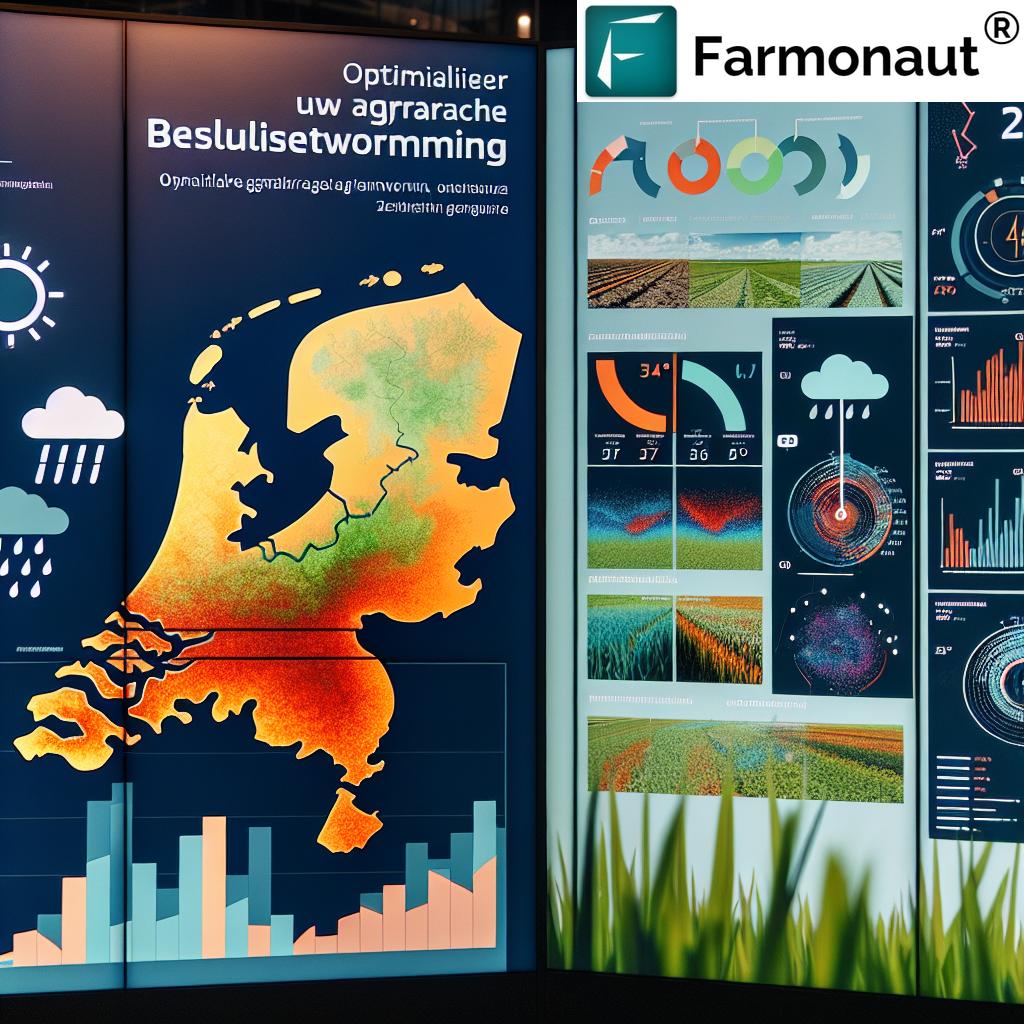Table of Contents
- The Rising Influence of European Lithium Mining Companies in 2025 & Beyond
- Why Lithium Matters: Strategic Importance for Europe
- Key Milestones: Trivia & Market Capacity (2026)
- Top European Lithium Mining Companies & Mines 2026
- Comparative Table: Leading European Lithium Mining Companies (2026)
- Technology & Innovation in European Lithium Extraction
- Sustainable Practices, ESG Commitment, and Environmental Frameworks
- Market Challenges: Regulatory, Social, and Technological Hurdles
- Unlocking the Value of Satellite Data for Mining Operations
- Implications: European Lithium Companies Enabling the Green Transition
- Frequently Asked Questions (FAQ)
- Conclusion
“By 2026, European lithium mining capacity is projected to supply over 80% of the EU’s battery-grade lithium demand.”
Top European Lithium Mining Companies & Mines 2026
The Rising Influence of European Lithium Mining Companies in 2025 & Beyond
The global lithium revolution is propelling Europe into the limelight as a critical region for sustainable mineral extraction. Throughout 2025 and into 2026, European lithium mining companies and their leading operations are playing a pivotal role in securing Europe’s energy autonomy, advancing technology and innovation, and ensuring a green transition. As ambitious climate and energy goals drive up demand for EVs, batteries, and renewable energy storage systems, the continent is rapidly reducing dependency on imports and fostering a robust domestic lithium supply chain.
In this comprehensive analysis, we delve into how the top European lithium mining companies and mines in 2026 are orchestrating this strategic, sustainable shift—with cutting-edge extraction methods, ESG initiatives, and bold visions for the future of battery-grade lithium manufacturing.
Why Lithium Matters: Strategic Importance for Europe
Lithium, often referred to as “white gold“, is indispensable for manufacturing batteries that power electric vehicles, renewable grids, and massive energy storage systems. Europe’s ambitious green goals—including the phase-out of internal combustion engines by 2035—have turned the region’s attention to stable, ethical, and domestic lithium supply chains.
Historically, the European industry has heavily relied on imports from South America and Australia, exposing it to global supply chain vulnerabilities, price volatility, and geopolitical risks. Recognizing lithium’s critical significance and the necessity to support a sustainable industrial transition, policy-makers and leading players across Europe are now investing in robust domestic extraction & processing capabilities.
- Strategic Autonomy: Europe’s own lithium mining companies are securing the continent’s place in global battery production and future mobility.
- Environmental Stewardship: EU environmental and ESG standards are among the toughest worldwide—driving sustainable mining practices and innovation.
- Supply Chain Integration: Enhanced traceability and local sourcing bolster industry resilience and reduce dependency on imports.
- Future Demand: Projections indicate that by 2026, local production can supply over 80% of EU’s battery-grade lithium demand.
Key Milestones: Trivia & Market Capacity (2026)
“Over 12 major lithium mining projects are set to operate across Europe, driving technological innovation in sustainable extraction.”
Top European Lithium Mining Companies & Mines 2026
The landscape of European lithium mining companies is rapidly evolving, with projects located in Finland, Portugal, Spain, the Czech Republic, Austria and more. Here’s an overview of some leading companies and their pivotal operations that are changing the game in 2026:
Finland: Keliber Oy and the Finnish Lithium Boom
- Keliber Oy is at the forefront of lithium extraction in Europe, leveraging the nation’s well-developed infrastructure and workforce.
- Operations: Keliber’s Sivakkalehto, Rapasaari, and Syväjärvi mines produce battery-grade lithium hydroxide from spodumene, sourced domestically, advancing the clean energy transition.
- Technology & Sustainability: Emphasizing advanced processing techniques, water minimization, and renewably-powered operations.
Austria: European Lithium Limited—Wolfsberg Project
- European Lithium Limited operates the prominent Wolfsberg Lithium Project in Austria.
- Focus: Extraction of lithium from hard-rock spodumene with sustainability and ESG priorities.
- Outlook: Projected to support Austria’s and the EU’s battery supply ambitions via advanced environmental management systems.
Portugal: Galp, Savannah Resources, Lusorecursos
- Portugal is home to some of Europe’s most abundant lithium deposits, with significant projects in Barroso and Covas do Barroso.
- Companies: Savannah Resources and Lusorecursos are leading lithium extraction in northern Portugal, employing hard-rock mining and innovative methods like lithium extraction from geothermal brines.
- Sustainability: Water-efficient practices and community engagement drive long-term project viability.
Spain: Infinity Lithium and Lithium Iberia
- Infinity Lithium is a primary developer of the San José Valdeflórez project in Spain, utilizing advanced extraction methods targeting European battery and EV supply chains.
- Lithium Iberia strengthens Spain’s role in the European lithium mines landscape with projects like Las Navas.
Czech Republic: Geomet (European Metals Holdings) & Cinovec Project
- The Cinovec project, managed by Geomet (a subsidiary of European Metals Holdings), represents the largest lithium resource in the EU.
- Extraction from lithium-rich clays with a focus on minimizing environmental impacts and carbon footprint.
Comparative Table: Leading European Lithium Mining Companies (2026)
| Company Name | Country | Major Mine(s) | Est. Annual Lithium Output (Tonnes, 2026) | Extraction Technology Used | Sustainability Initiatives | Projected Market Share (% in Europe, 2026) |
|---|---|---|---|---|---|---|
| Keliber Oy | Finland | Sivakkalehto, Rapasaari, Syväjärvi | 15,000 | Spodumene Concentration & Conversion | Renewable energy, water recycling, local community programs | 18% |
| European Lithium Limited | Austria | Wolfsberg Project | 10,000 | Hard-Rock Mining, Hydro-metallurgical Processing | Low-carbon processing, biodiversity protection | 12% |
| Savannah Resources | Portugal | Barroso Lithium Project | 7,500 | Open-pit Spodumene, Dry Processing | Minimizing water use, transparent community reporting | 9% |
| Geomet (European Metals Holdings) | Czech Republic | Cinovec | 10,500 | Clay Processing, Closed Circuit Leaching | Tailings recycling, carbon-neutral goals | 11% |
| Infinity Lithium | Spain | San José Valdeflórez | 6,000 | Underground Mining, Direct Lithium Extraction (DLE) | Energy efficiency, waste heat recovery | 8% |
| Lusorecursos | Portugal | Mina do Romano | 4,200 | Geothermal Brine Extraction | Zero liquid discharge, community engagement | 6% |
| Lithium Iberia | Spain | Las Navas Project | 3,500 | Open-pit & DLE Combined | Smart water management, biodiversity offsets | 4% |
Technology & Innovation in European Lithium Extraction
The competitive edge of European lithium mining companies lies in their relentless innovation and adoption of advanced extraction technologies designed to minimize environmental and social impacts.
Key Extraction Methods:
- Spodumene Concentration: Processing hard-rock lithium ore with energy-efficient grinding, flotation, and chemical conversion to battery-grade hydroxide.
- Direct Lithium Extraction (DLE): Innovative DLE technologies extract lithium from brines with lower water use and waste generation, rapidly gaining traction among European lithium mines.
- Closed Circuit Leaching & Zero Liquid Discharge: These systems, particularly seen in projects like Cinovec, recycle process water and minimize effluent discharge.
- AI and Satellite Integration: Several companies deploy real-time monitoring, machine learning, and remote-sensing technologies to optimize yield and lower environmental footprints.
Benefits of Advanced Extraction
- Increased Lithium Recovery Rates
- Reduced Water Consumption
- Lower Greenhouse Gas Emissions
- Optimized Resource Utilization
- Enhanced Community & Environmental Integration
Unlocking the Value of Satellite Data for Mining Operations
In rapidly evolving sectors such as mining and energy resource management, satellite solutions deliver actionable insights and bridge the gap between operational efficiency and environmental stewardship. Companies can leverage Farmonaut’s Carbon Footprinting tools to quantify emissions from lithium mining processes, facilitating compliance with ESG standards and national regulations. For industries focused on supply chain transparency, Traceability solutions ensure every step of lithium’s journey is monitored, boosting trust and accountability from mine to battery manufacturer.
Real-time environmental monitoring and resource management—from fleet logistics to land-use tracking—are now accessible to mining operators across Europe via Farmonaut’s intuitive Android, iOS, and web applications:
APIs are available for seamless data integration:
Farmonaut API Access |
Developer Docs
Sustainable Practices, ESG Commitment, and Environmental Frameworks
European lithium companies distinguish themselves with a deep commitment to sustainable mining, corporate responsibility, and strong integration of ESG (Environmental, Social, Governance) criteria across all operations. This approach not only aligns with the European Green Deal and 2030/2050 climate targets, but also builds social license with communities impacted by new lithium mines.
Leading ESG & Sustainability Processes:
- Renewable Energy Integration: Transitioning mine operations to solar, wind, or hydro power wherever feasible.
- Water Conservation: Closed loop water systems, efficient DLE methods, and brine processing to minimize fresh water use.
- Waste Management: Ongoing initiatives for tailings recycling, material recovery, and zero disposal objectives.
- Land Rehabilitation: Proactive forestry, soil reclamation, and habitat restoration within mining sites.
- Community Engagement: Transparent reporting and participatory planning frameworks in all major projects.
- Blockchain Traceability: Enables supply chain transparency and authenticity—visit product traceability for more.
Market Challenges: Regulatory, Social, and Technological Hurdles
As the European lithium mining industry continues to scale, several common challenges persist:
- Stringent Environmental Regulations: The need to secure permits and maintain compliance with EU standards for emissions, biodiversity, and land use.
- Community Acceptance: Ensuring local populations benefit and are protected from mining impacts—especially in rural or forested regions.
- Technological Barriers: Ongoing need to improve DLE, clay processing, and low-impact mining methods to remain competitive and sustainable.
- Market Volatility: Lithium prices are subject to global demand swings and evolving supply chain vulnerabilities.
- Supply Chain Risks: The continued need to reduce dependence on imports from outside the EU—especially amid geopolitical tensions.
Addressing these hurdles will keep European lithium companies at the innovation frontier, pushing the envelope on sustainable industrial future.
Implications: European Lithium Companies Enabling the Green Transition
European lithium mining companies are the foundation on which Europe’s clean energy transition stands. Their rapid progress toward domestic lithium autonomy supports multiple downstream beneficiaries:
- Battery Manufacturing: Onshore conversion plants benefit from stable, ethical lithium supply chains.
- Electric Vehicle (EV) Ecosystem: Consistent lithium supply enables mass production, reduces costs, and supports the transition away from internal combustion engines by the 2035 deadline.
- Renewable Energy Storage: Robust local supply of lithium feeds large-scale deployment of storage systems, vital for integrating renewables into the grid.
- European Green Deal: Strengthened industrial competitiveness and social impact as the continent builds a “made in Europe” energy future.
- Technological Sovereignty: Ensures leadership in advanced extraction, processing, traceability, and resource management for the long term.
The future of European lithium mining companies is not just about mineral extraction. It’s about fostering an innovative, sustainable, and autonomous ecosystem that powers every part of Europe’s clean energy vision.
Subscribe to Farmonaut Satellite & AI Solutions for Mining
Frequently Asked Questions (FAQ)
- What are the main focus regions for European lithium mining in 2026?
The leading regions include Finland, Portugal, Austria, Spain, and the Czech Republic—each hosting projects from major companies tapping sizable lithium deposits. - Why is lithium referred to as “white gold,” and why is it critical?
Lithium is crucial for modern battery manufacturing, which powers EVs, renewable energy storage, and grid systems—making it a critical mineral for the energy transition and future economic autonomy. - What are the main extraction technologies adopted by European lithium companies?
Leading projects employ a mix of spodumene concentration, direct lithium extraction (DLE), hydro-metallurgical processing, and advanced tailings/water management techniques to maximize efficiency and minimize environmental impacts. - How do European companies ensure sustainability and ESG leadership?
Through ongoing investment in renewable energy integration, water recycling, community engagement, land rehabilitation, blockchain traceability, and compliance with EU ESG frameworks. - How can advanced satellite and AI technology support mining operations?
Using platforms like Farmonaut, mining operators gain real-time insights into environmental impact, optimize fleet management, and comply more easily with regulatory and sustainability goals.
Learn how Fleet Management via Farmonaut can help reduce costs and environmental impact by optimizing vehicle and equipment scheduling in European lithium mining operations.
Explore Large Scale Farm Management solutions to adapt reclamation and forestry strategies on mined or restored lands, supporting biodiversity conservation.
Discover Crop Plantation & Forest Advisory for guidance on ecological restoration post-extraction—vital for compliance and ESG targets within lithium-rich landscapes.
Conclusion: Lithium Mining Companies Reshaping Europe’s Green Future
For 2025, 2026, and beyond, European lithium mining companies have not only emerged as pivotal players in the global lithium industry, but have also set new standards in technology, sustainability, and supply chain autonomy. With world-leading projects in Finland, Portugal, Spain, Austria, and the Czech Republic and an emphasis on advanced extraction, responsible management, and ESG leadership, these companies are enabling Europe to transition towards a clean, self-reliant energy future.
The synergy between technological innovation and sustainable resource management ensures that this industry remains nimble and future-proof—supporting everything from EV manufacturing to renewable energy integration and battery supply chains.
As digital monitoring and data-driven platforms like Farmonaut continue to unlock new efficiencies for mining operations (from emissions tracking to supply chain traceability), Europe is fast becoming a global benchmark for critical mineral autonomy and green industry innovation.
For more information or to get started with satellite-powered mining operations management, access the Farmonaut platform via our web, Android, or iOS apps listed above.















